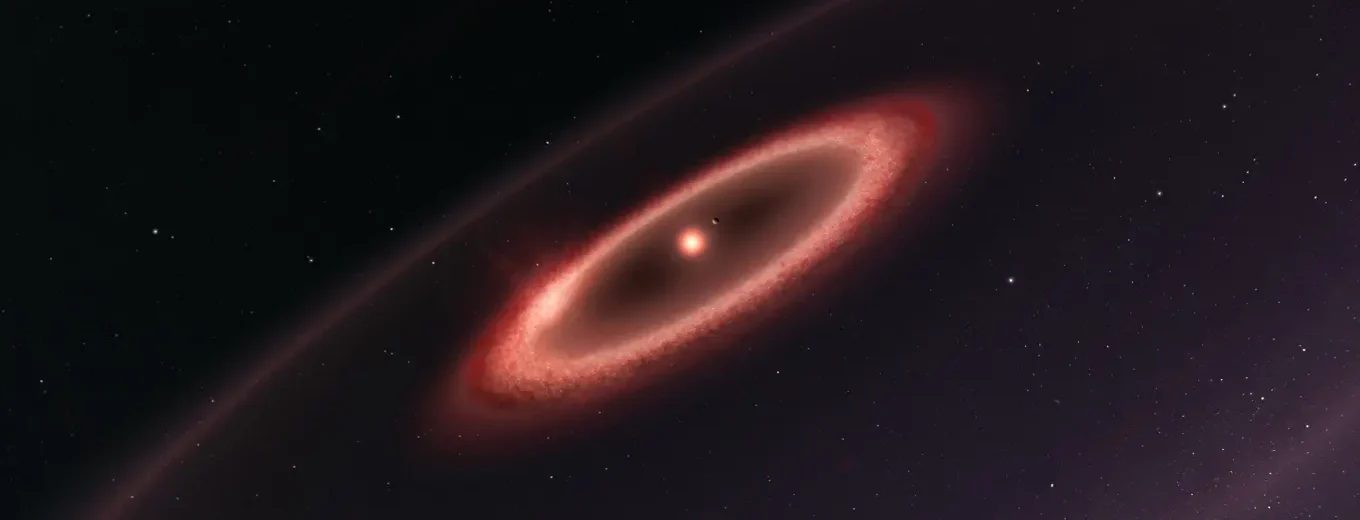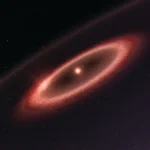Nearest exoplanet may be part of larger system
Read time: 3 minutes
Our planet Earth orbits the Sun. And it’s not alone. Our solar system contains eight planets, many dozens of moons, and countless asteroids, icy ‘dwarf planets’ and comets. Other stars also have planets. Astronomers have already discovered thousands of them. Even the nearest star has its own planet. New ALMA observations now seem to indicate that this planet is also part of a ‘richer’ system.
Proxima Centauri is the star that is closest to the Sun. The name ‘Proxima’ actually means ‘nearby’. The star is only four light-years away. However, it’s invisible to the naked eye. That’s because Proxima Centauri is a faint and cool red dwarf star.
In 2016, astronomers discovered a planet around Proxima Centauri. It orbits very close to the star, at a distance of just 4 million kilometers. But because the star is so faint and cool, the temperature on the planet (known as Proxima b) is comparable to the temperature on Earth. There may even be water on its surface.
ALMA has now discovered that Proxima b may be part of a larger planetary system. Beyond the orbit of Proxima b is a belt of cool dust particles. Much further out may be another dust belt, with an even lower temperature. ALMA detected the faint millimeter radiation of the dust particles.
Our own solar system has two similar belts of dust and rubble. The first is the asteroid belt, between the orbits of Mars and Jupiter. The second is the Kuiper Belt, beyond the orbit of Neptune. Both belts contain lots of rocky and icy chunks of matter: asteroids and ice dwarfs. The dust is produced when those objects collide.
If Proxima Centauri has similar belts of material, it may also have additional planets. Who knows, the ‘solar system’ of Proxima Centauri may be as complicated as our own solar system.
Some people are developing plans to send tiny unmanned spacecraft to Proxima Centauri, to take a look. But even the fastest spacecraft will take decades to reach the star. So it will be a very long time before we know more about Proxima’s planetary system.
What?
Proxima Centauri is a faint dwarf star in the southern constellation Centaurus. It is in a very wide orbit around the bright binary star Alpha Centauri. The planet, Proxima b, is almost 40 times closer to the dwarf star than the Earth is to the Sun. The inner dust belt around
Proxima lies way beyond the planet’s orbit, at a distance of a few hundred million kilometers. Because the star is so faint and cool, the temperature of the dust is very low: some 230 degrees Celsius below freezing. The outer dust belt is ten times further away, and even colder.
Who?
The dust belts of Proxima Centauri were discovered by an international team of astronomers. The team was led by Guillem Anglada of the Astrophysical Institute of Andalusia in Spain. One of Guillem’s Spanish team members has almost the same name: Guillem Anglada-Escudé. He was the one who discovered Proxima Centauri’s planet in 2016. But the two Guillems are not related to each other. The discovery of Proxima’s dust belts has been published in Astrophysical Journal Letters.
ALMA URL
